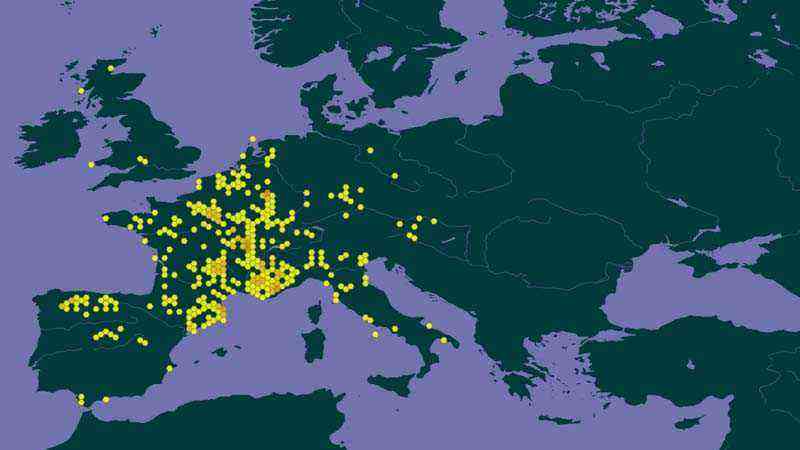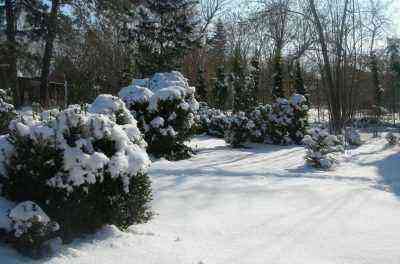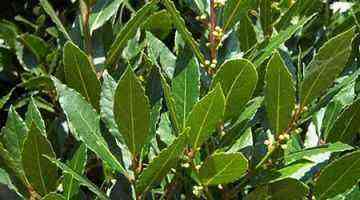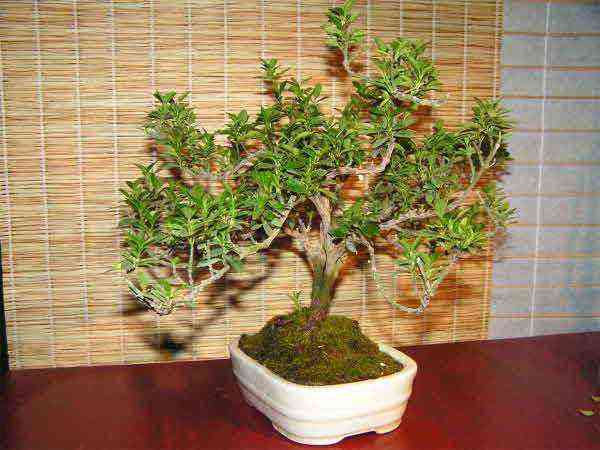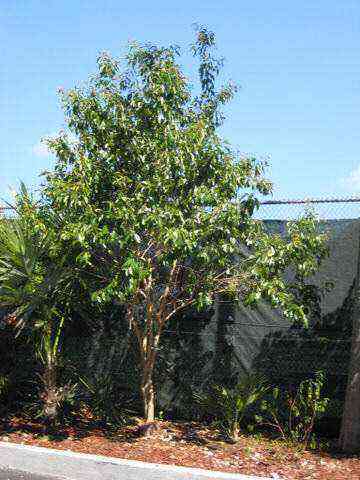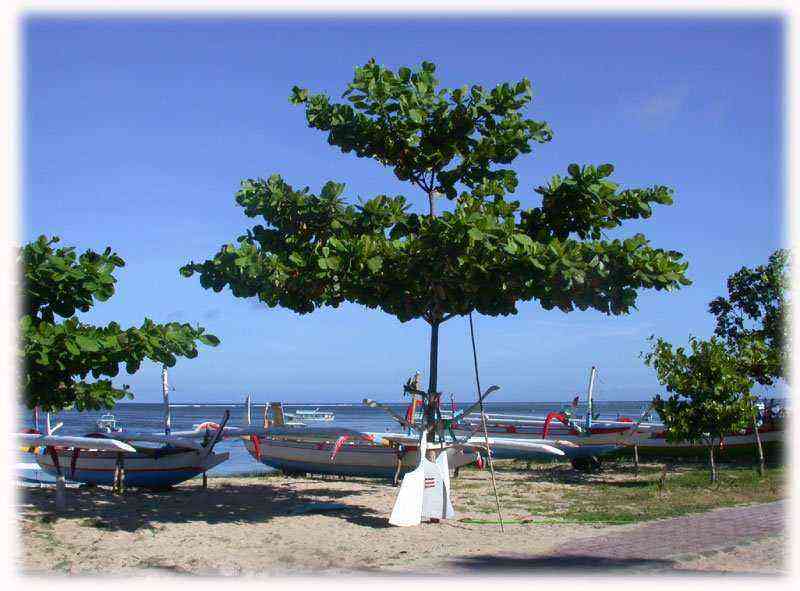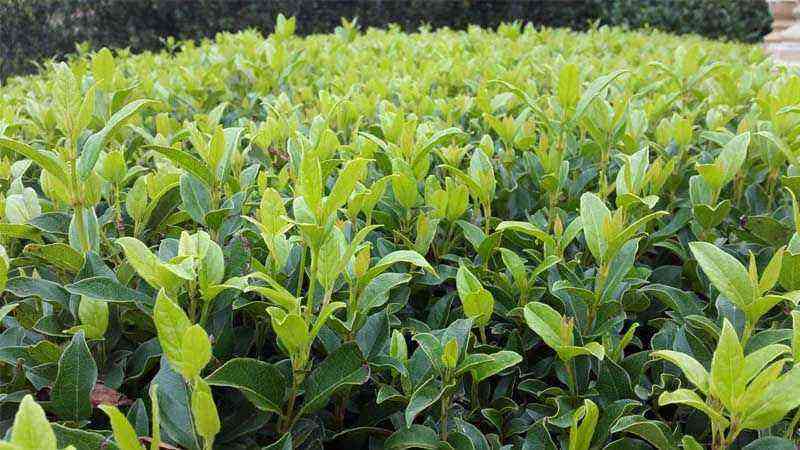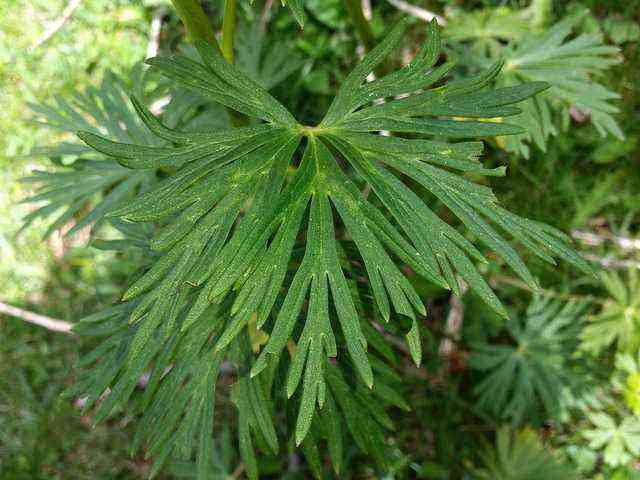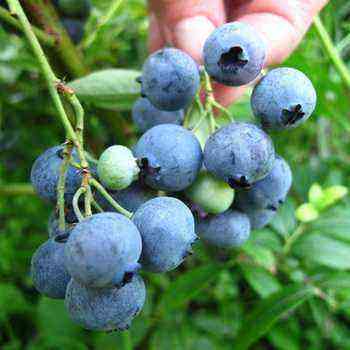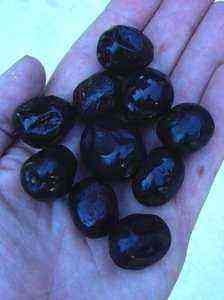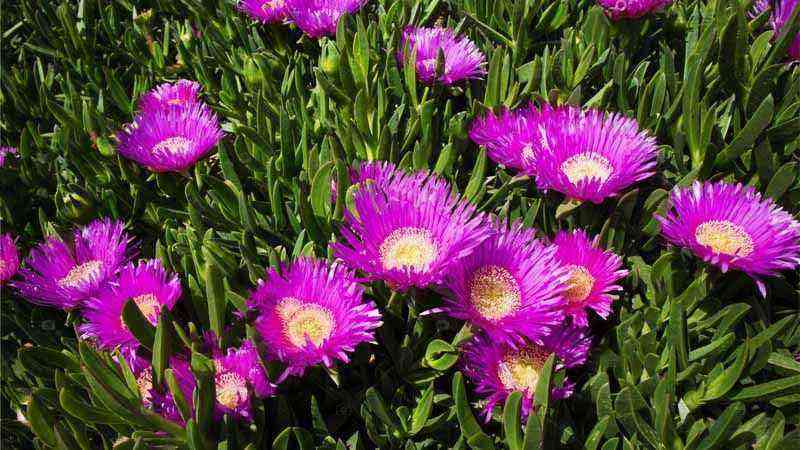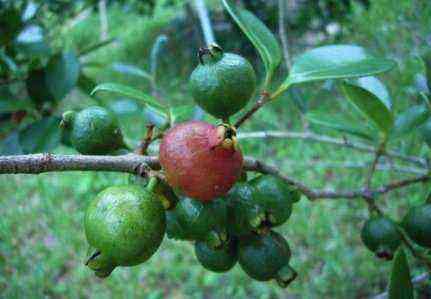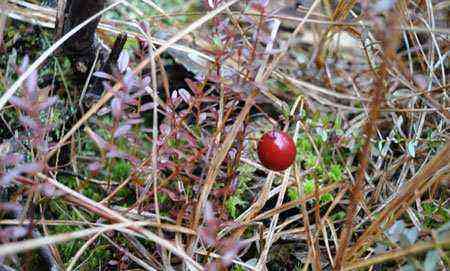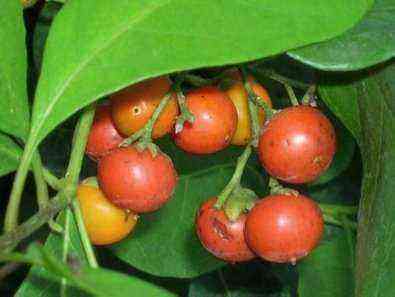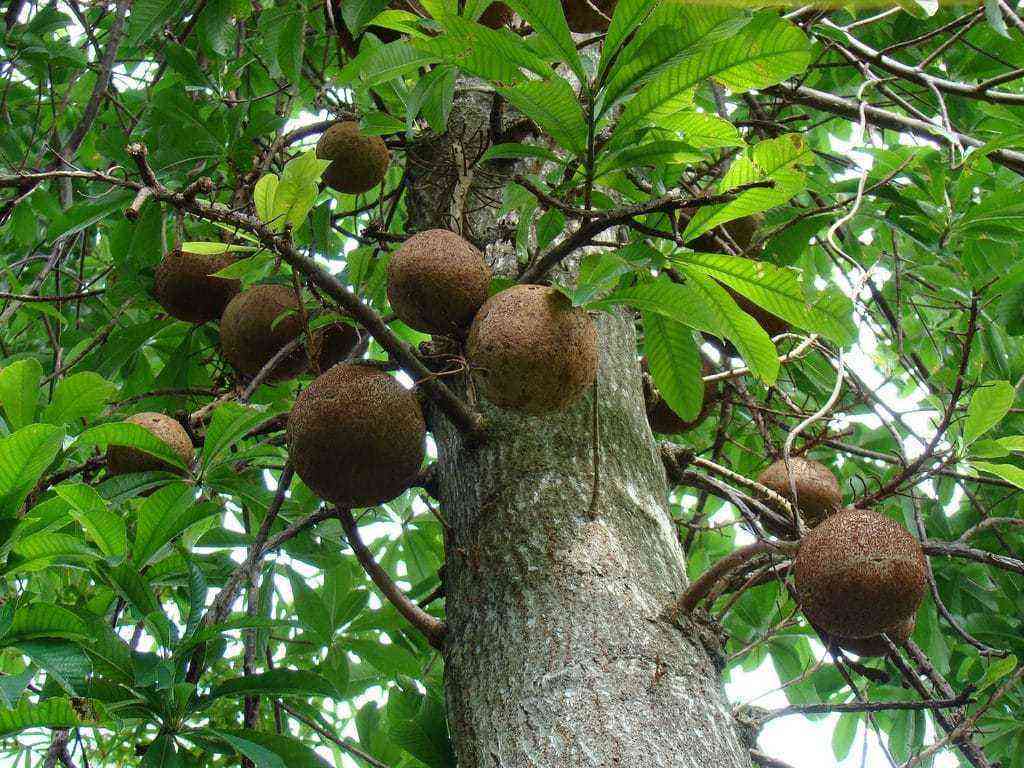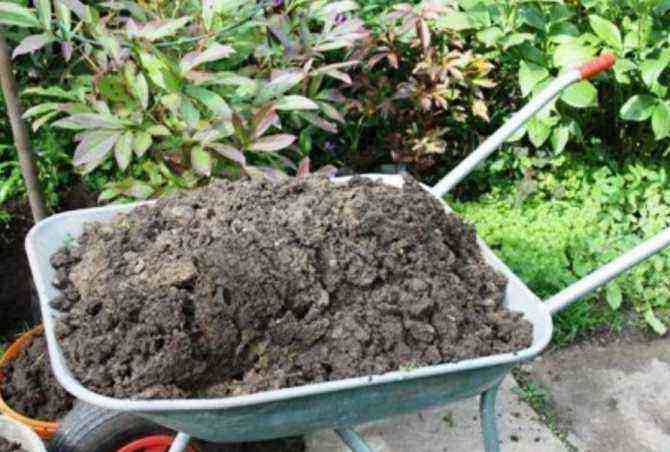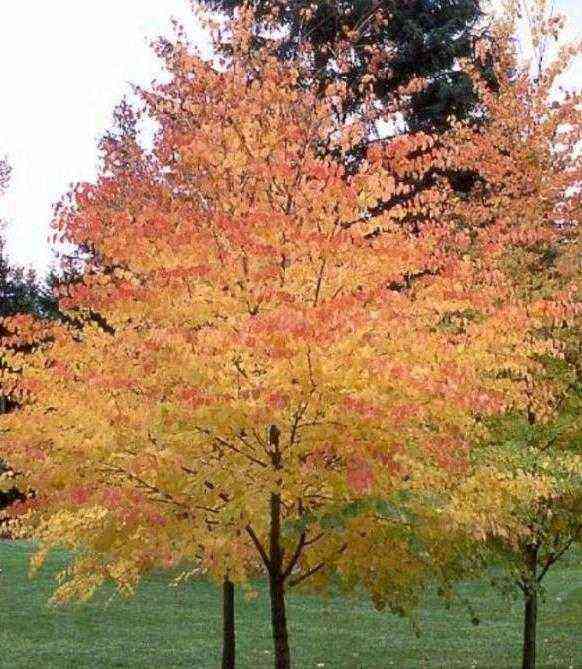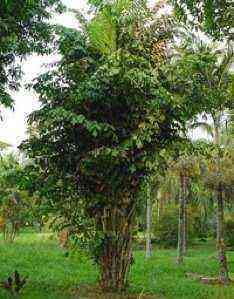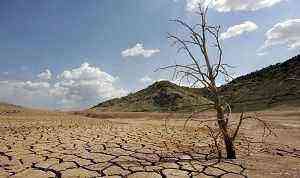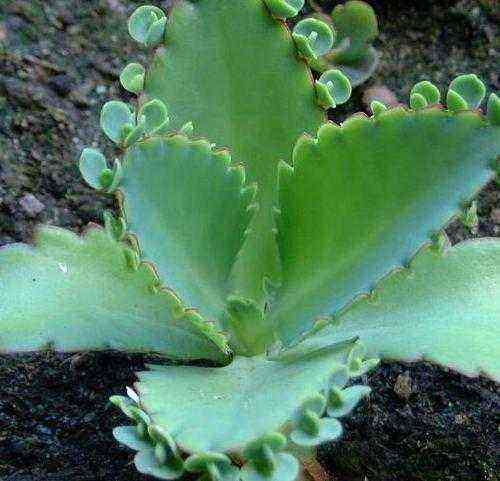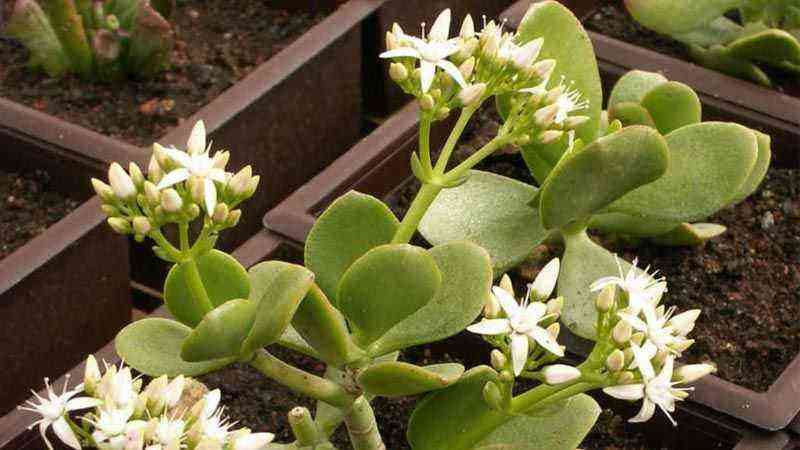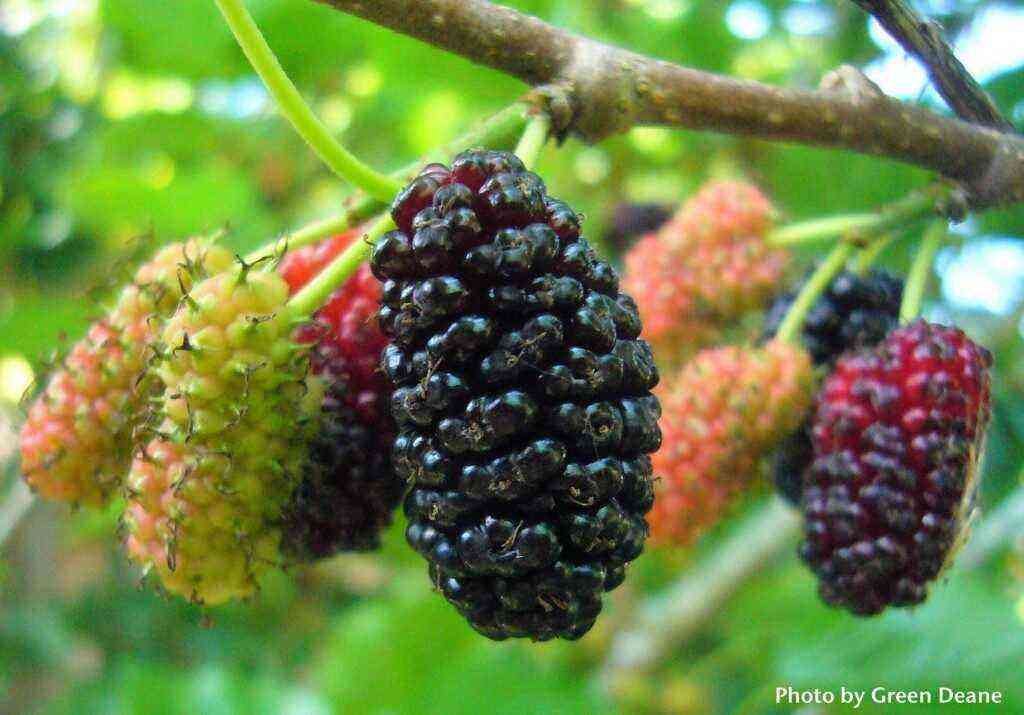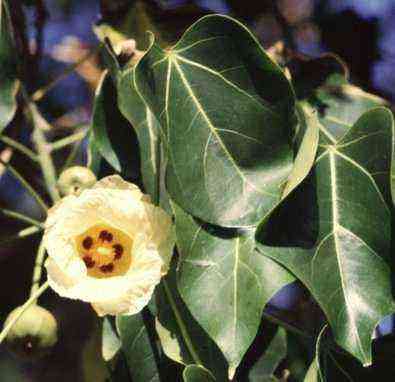Psidium or guava. Psidium Guayava (Guava) from seeds.
In colder climates, place the tree in a place that is fully illuminated by the sun, and then the plant will feel great. Formation of Fruit Load – Whenever a guava is in bloom, it is best to remove the flowers without allowing the fruit to set. This is especially true for young and weak plants. If the gardener decides to get fruits from his indoor tree, you should not leave more than four fruits on one branch.
The branch must be strong and at least 3 years old. Transplant – every month you need to increase the size of the planting container in which the tree grows. The new pot should be a little larger than the previous one, literally by cm. You cannot plant the guava immediately in a very large planting container.
For transplanting into a new container, the plant is carefully shaken out together with a clod of earth from the old pot and, using the transfer method, an earthen clod with guava is installed in a new pot.
This tree not only contributes to enrichment, but also treats severe depression associated with financial difficulties. Guava soil is undemanding and grows well in a variety of soils, but prefers a well-drained soil with an acid-base balance of pH 5 to 7.
Planting soil – The soil mixture should be made up of equal parts earth, sand and organic compost.
Fertilizers To feed the guava tree, you need to purchase fertilizer for indoor potted trees, which is sold in specialized garden stores. Florists are advised to refrain from fertilizing guava from autumn to mid-winter. To feed young plants, you need to apply fertilizers once a month during the first year of life in small quantities. During subsequent years of plant growth, fertilizing is reduced up to three to four times a year, but a single dose of fertilizer applied increases.
Botanical description
Learn about the properties of nitrogen, potash and phosphorus fertilizers. Guava has shallow roots that quickly absorb water and nutrients, so it doesn’t need frequent, deep watering. In the summer, the plant should be watered abundantly two to three times a month under the root and by sprinkling. In the winter months, the tree enters a state of dormancy, so watering at the root should be done rarely and in moderation.
When the topsoil becomes dry to a depth of cm, then it’s time to water the plant. The soil under a flowering or young guava should be kept slightly moist for up to six months. The evenly moist soil when pouring the fruit helps the gardener to harvest juicy and sweet fruits. Guava trees are drought tolerant, in their native tropics they are watered only during the rainy seasons. In between rains, trees calmly endure long periods of drought. However, it is best for a container plant if the root layer is slightly damp.
These tropical trees thrive in warm climates, but are afraid of cold weather.
Transfer
Young plants are transplanted into fresh soil and a pot one size larger for the first five years – annually in spring. Drainage, fresh nutrient soil are placed in a new pot and a tree is planted without deepening the root collar. They are usually transplanted by transshipment: without disturbing the earthen coma. So the root system will not be susceptible to accidental injury.
In subsequent years, this procedure is carried out every five years: the plant is transferred to a larger pot. Fresh soil is placed between the walls of the container and the old earthy lump. When the guava grows to 80-100 cm, a partial replacement of the soil is preferred over the transplant: the top layer of a few centimeters is carefully removed, and a fresh one is put in its place, with the addition of fertilizer.
Psidium cattleianum. Strawberry yellow guayava, Psidium cattleianum
Strawberry guava, Psidium cattleianum is a small evergreen slow-growing tree 2-4 m high with dark green glossy leathery leaves 3,4-12 cm long and 1,6-6 cm wide. The fruit is round, 2,5-4 cm in diameter, with a thin skin of dark red, purplish red or lemon yellow. The pulp of red fruits is white, slightly reddish near the skin, yellowish in yellow fruits. In both types of fruits, the flesh is juicy, translucent and has a strawberry aroma. Prefers loose, fertile soils, sunny location, regular watering, without overdrying and stagnant water. Can be grown as a pot crop. Guava is not demanding to care for and will grow in almost any conditions.
Description of strawberry guava
The homeland of the strawberry guava, or as it is also called the Kettley guava, is Eastern Brazil. The small evergreen tree barely reaches 4 m in height. The plant is easily adapted to almost all areas with a tropical climate. Today it is considered a plant – a parasite in Hawaii, where it forms dense thickets, taking possession of huge areas of land. Strawberry guava is quite aggressive in its growth, fertile, and most likely contains some toxic substances that are detrimental to the sprouts of other plants. Guava acquired its second name thanks to the gardener William Cattley. There are several other names for strawberry guava, such as Peruvian or strawberry.
Strawberry guava fruit
Strawberry guava blooms exclusively in spring. It takes 5-6 months from flowering to fruit ripening. Guava fruits are divided by color into two types: Bright red with a pronounced strawberry flavor Yellow fruits or yellow-green with lemon flavor Fruits no more than 4 cm in diameter, contain juicy, sweet pulp. The taste of the fruit is soft and does not contain a musky aroma. Jams, juices, preserves, jellies, and alcoholic drinks are made from juicy fruits. Delicious raw strawberry guava.
Strawberry guava is often grown at home, greenhouses and conservatories are perfect. The plant is not at all capricious to the soil, any soil is perfect. There is also a special primer for myrtle plants on sale. By trimming the guava leaves, you can create any shape. The plant tolerates shade remarkably, but the sun is more favorable for growth and fruiting. For the favorable growth of domestic guava, temperature conditions should not be lower than 15 ° C. Do not forget that a tropical plant does not tolerate temperature changes. Light frost can be detrimental to guava, especially a young tree. A young plant needs to be watered more often, the soil should not dry out. Several times a year, especially in spring, it is necessary to feed the plant. Reproduction is more successful by seeds than by cuttings. For planting, it is better to immediately take a larger pot, since the guava grows very quickly. Seeds need to be poured with water at room temperature for a couple of hours. Then place the seeds in several holes and lightly sprinkle with sand. Until the moment of germination, the pot should preferably be in a sunny, bright place. For the plant to branch, it should be pinched in the first year of life. Plants over two years old need to be pruned every year. Young guava will bloom no earlier than three years after planting. Flowers must be pollinated artificially; this must be done with a soft-bristled brush. And in the fall, guava will delight you with juicy fragrant fruits. Guava has a great effect on indoor air quality, however, like all members of the myrtle family. The plant is extremely resistant to many pests. The leaves always delight with a shiny, bright green gloss. Under especially unfavorable conditions of detention, it is possible that the guava is affected by a spider mite.
Nutritional value of strawberry guava
The energy value of guava is 69 kcal. Fruits contain essential proteins, carbohydrates, dietary fiber. Vitamins A, B1, C, PP. Also, guava is rich in trace elements: phosphorus, sodium, magnesium, calcium.
Psidium kettley (Psidium coastal)
Psidium cattleianum (Psidium littorale, Psidium cattleanum). Previously, psidium kettley and psidium littoral were divided into two separate types. According to modern taxonomy, they are combined into one species. Distributed in Brazil, Argentina and other countries in South America.
Psidium kettley belongs to the same genus as the common guayava sold in our stores. It is sometimes called strawberry guava, although they are actually different species.
- It grows as a medium-sized tree, shrub.
- Leaves about 10 cm long, opposite (like all myrtles), obovate, not pubescent, dark green.
- The bark is smooth, cracks and flakes in places.
- Fruits are oblong berries up to 6 cm long, fragrant and sweet when the plant is sunny and watery in the shade.
In nature, psidium kettley blooms almost constantly. In our conditions, mainly – in the spring, and a small second wave – in the fall.
There are many forms and varieties. The main division is based on the color of the fruit; there are forms with yellow and red fruits.
Psidium kettley yellow
Yellow-fruited varieties are more decorative, with unripe dark-green bumpy fruits, they look more exotic, however, when ripe, fruits have a less pronounced taste than red-fruited ones. Plants without fruit differ little in leaves and flowers.
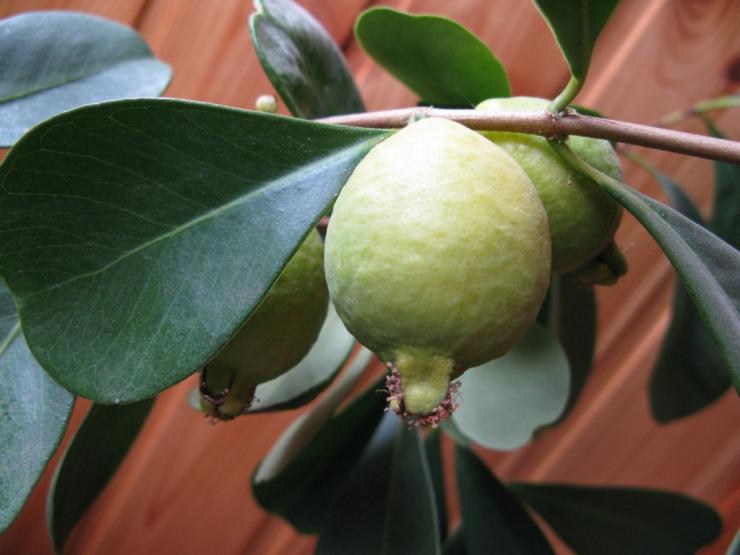
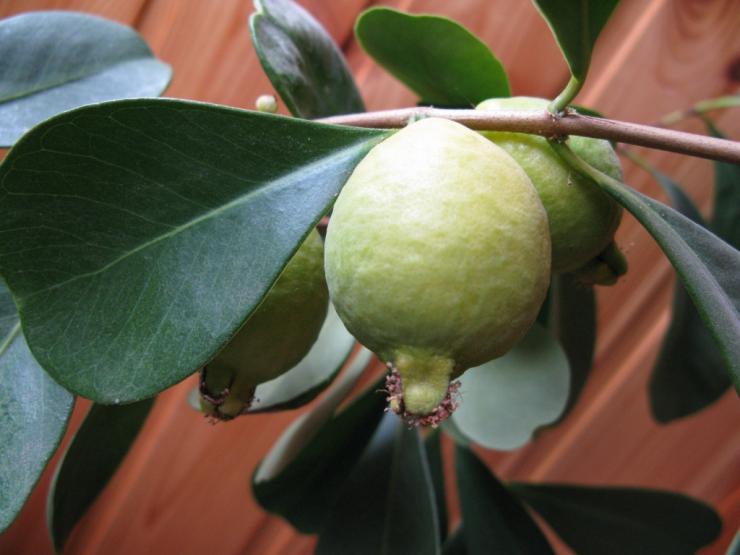
Photo: psidium cattley yellow
Cultivation
Psidium is easily grown from both seeds and cuttings. Depending on freshness, seed germination varies from two to three weeks to several months. Cuttings root easily. When propagated by cuttings, it blooms in the 2-3rd year, by seeds – not earlier than the 3rd.
Shaping and responds well to moderate pruning. Strong pruning, with a decrease in leaf mass by more than half, tolerates hard, recovers for a long time and does not bloom in the coming season. Grows untidy bush without pruning.
It blooms easily and sets fruit. The plant is capable of self-pollination, but it is better to additionally pollinate with a soft brush during flowering.
Any slightly acidic soil, composed with the addition of coarse sand and a small amount of peat, is suitable for growing psidium kettley. Strongly acidic soils (eg ready-made soil for azaleas) are not suitable.
It winters well on an insulated loggia or in a winter garden at a temperature of 10-15˚С. Withstands short-term temperature drop up to 2С. ______________________________________________
I have already talked about the conditions for growing fruit myrtle at home in this article.
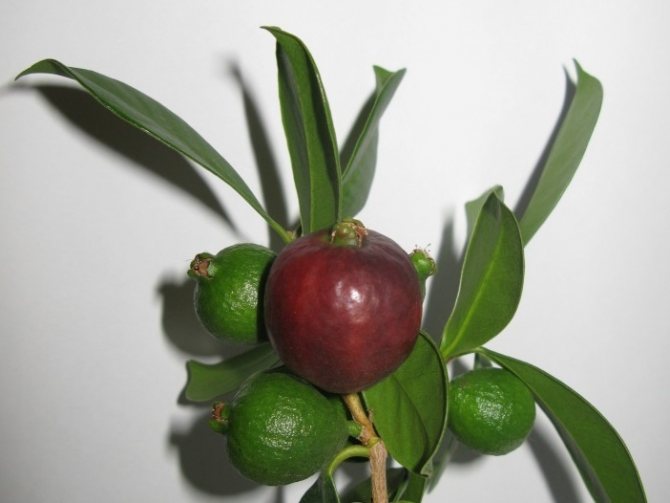
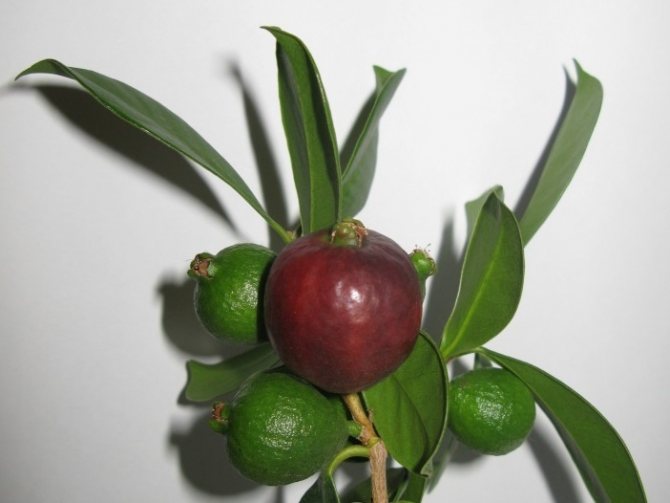
Photo: psidium cattley red
Strawberry guava at home. How to grow a guava at home
Strawberry guava (Psidium cattleianum), or Strawberry Psidium is a short evergreen tree. Under natural conditions, it grows up to 2-4 m in height, in rooms it does not reach such dimensions. The leaves of the strawberry guava are dense, dark green in color, similar to coffee leaves. Strawberry guava is grown for the sake of tasty and healthy fruits. The fruits are red, 2,5 to 4 cm in diameter, resembling hawthorn fruits. Jams, jellies are made from the fruits, and juice is obtained. You can eat the fruits and fresh.
- World
- Watering
- Additional fertilizing
- Temperature
- soil
- Reproduction
- Care
Strawberry guava needs a lot of sunlight, it is best to grow it in the brightest room with windows on the south side.
Strawberry guava is watered regularly all year round with a moderate amount of water. The soil should not dry out and there should be no stagnation of water in it. In summer, it is advisable to spray the plant in the morning or in the evening.
During the period of active growth, strawberry guava is fed once every two weeks with liquid complex mineral fertilizers.
Guava is a very thermophilic plant and dies at temperatures below 15 ° C. In summer, psidium can be taken out into the fresh air.
Strawberry guava grows well on any soil. For her, you can make a mixture of turf, leafy soil, humus, peat and sand (3: 2: 2: 2: 1). It is advisable to grow psidium not in flower pots, but in large tubs.
Guava is propagated by seeds and cuttings. Cuttings can be cut all year round. Cuttings are rooted in a peat-sand mixture at a high temperature.
To limit the growth of psidium, it is necessary to periodically prune it. In order to get fruit, it is necessary to study the characteristics of a particular variety. Some varieties are self-pollinated, while others are pollinated by bees. Artificial pollination of flowers can be carried out.
Psidium at home. Psidium is a beautiful plant with healing fruits
Psidium is an ornamental exotic plant from the Myrtle family. It is common in the vastness of Mexico and Brazil, but in our country it is grown as a houseplant. In addition to its attractive appearance, it has very aromatic and healthy fruits. It is with them that psidium is most often depicted in the photo. Fruits can even ripen in indoor plants.


Botanical description
Psidium is an evergreen or semi-deciduous shrub. Sometimes the plant takes on the appearance of a small tree with a lush crown. Its height ranges from 1 to 3,5 meters. Young shoots have a rectangular cut and are covered with a greenish-brown skin.
Young branches have leathery dark green leaves. The leaves are located on short petioles and have a relief pattern of veins. The oval leaf blade is slightly bent back along the central vein. The length of the leaf is 7-15 cm. The reverse side of the leaves is covered with short dense pubescence.
In spring, small single flowers appear on young shoots. Their petals are white. The flowers are composed of a short tube, four open petals and many yellow stamens in the center. Flowering is quite long, new buds can be on the branches at the same time as ripe fruits.
Psidium fruits
Psidium produces very tasty and healthy fruits. They are often referred to simply as guava, by analogy with one of the species. They resemble a pear or lemon in shape and are covered with a dense green or raspberry skin. Inside there is a juicy and aromatic pulp of white, cream or pink flowers. In the center of the fruit, there are many small whitish seeds.
The pulp of psidium contains a large amount of ascorbic acid, tannins and essential oils. These fruits are simply irreplaceable in case of weakened immunity or loss of strength. The delicate pulp nourishes, energizes, strengthens the lymphatic system and helps fight colds. The only contraindication is an allergic reaction.
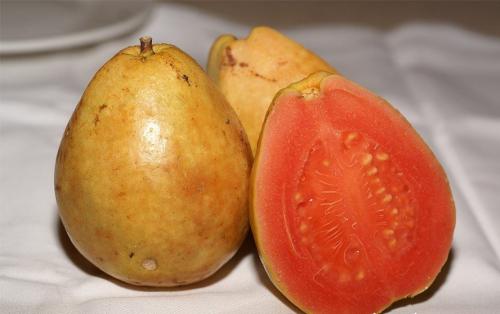
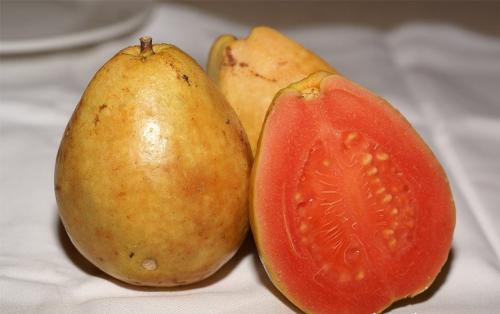
Guava, cactus. Guava
Well, now it is the turn of a very common fruit in Brazil – psidium or guava, which is also known as guayava.
In general, it’s rather strange that I have not shown it before, but I still have one reason for this. The fact is that this very fruit grows in my yard and, it would seem, on the contrary, it should have pushed me to write, but no 

Well, aside from the dirty tree in my yard, the guava is well worth your attention. 

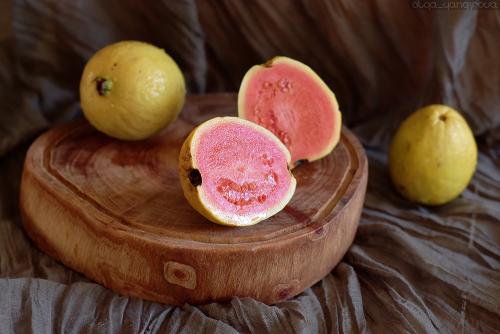
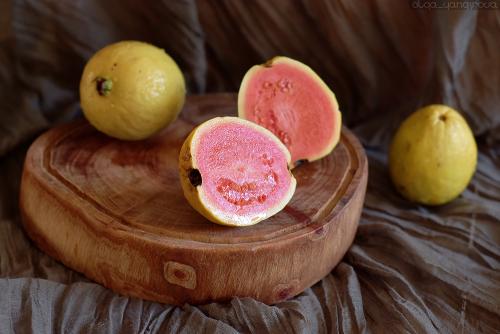
The homeland of the guava is considered to be Central and South America, later the fruit was brought to Southeast Asia, India, Africa and Oceania. Today, guava is a fruit tree that is quite common in the tropics and subtropics. Even in Russia there are connoisseurs who manage to grow it. Such popularity of guava has developed not by chance – the fruits have a wonderful aroma and taste, at the same time, the tree is completely unpretentious in care.
Guava is a small evergreen spreading tree of the Myrtle family. It blooms once or twice a year. I can tell from my tree that sometimes the tree rests. For example, last year the tree did not bear fruit, which I was incredibly happy about, but the other two years it suited me in the yard with such “hell and Israel” that I did not have time to run after it to clean. Guava bears too much fruit! Wikipedia writes that the harvest from one tree can be 100 or more kilograms of fruit. I am afraid that my tree should be given to read this article, so that it does not strain once again, because it will obviously give birth more.
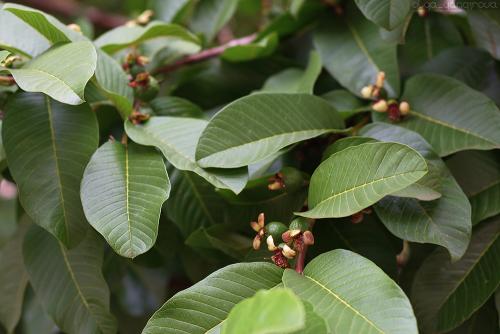
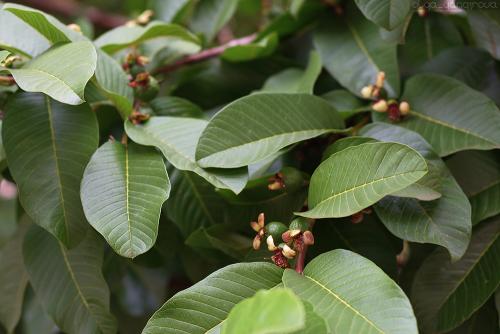
Guava fruits are round or pear-shaped with a thin yellow or green skin. The pulp, depending on the variety, can be watermelon-red or greenish-white. Inside the pulp there are many small, very tough bones. In this respect, guava fruits are very similar to tsabr. Bones are an unpleasant feature, but there are varieties without them.
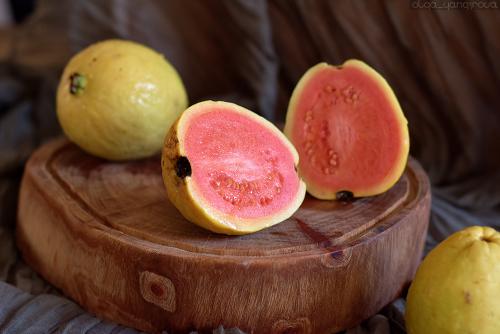
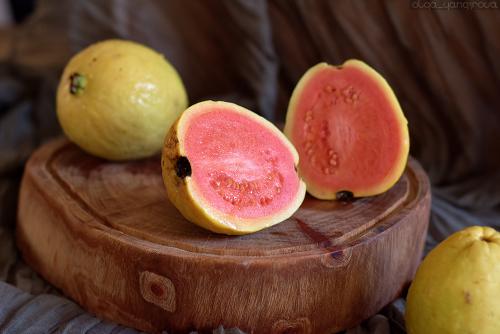
One of the main and indisputable advantages of the fruit is its expressive taste. Guava flavor is a bright, sweet and sour blend of aromatic wild strawberries, raspberries and watermelon. In the aroma, a kind of similar unique combination is also obtained. Although many people note a pronounced musky smell, I do not feel it in Brazilian fruits.
Due to its gastronomic virtues, guava is widely used in cooking. The fruits are consumed both fresh and cooked. As I mentioned above, there are many hard seeds in the pulp of the fruit, therefore, when eating fresh fruit, you should be careful – the bones are so hard that you can even break a tooth. There are fruits together with seeds or get rid of them first – the choice is yours. I can only say that you can eat bones, and even useful – it is believed that they cleanse the intestines. As for other ways of using guava, there are many of them: jams, jams and marmalades, juices and syrups, salads, pastries and pastries are made from the fruits.
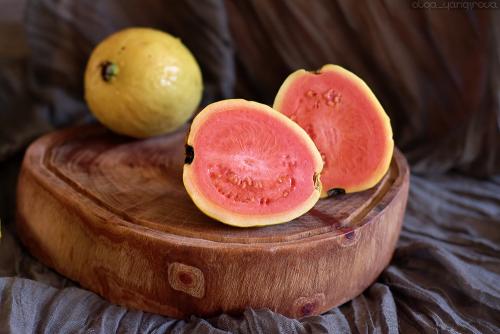
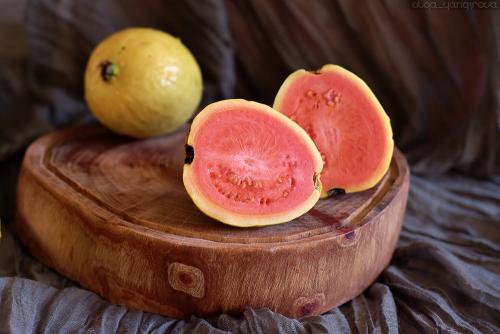
Guava is an incredibly healthy fruit rich in vitamins and minerals. For example, it contains many times more vitamin C than any citrus fruit, namely 180-300 mg per 100 g of guava. The lycopene, which is rich in tomatoes, is also significantly higher in guava (lycopene is the most powerful antioxidant carotenoid). And the potassium content, which bananas are famous for, is 1,5 times higher in guava. In addition, guava fruits contain vitamins A and B, minerals such as calcium, phosphorus and iron. Also, the fruits are very rich in folic acid – one fruit contains about 20% of the daily value.
In folk medicine, guava is used for a wide variety of ailments: inflammation, diabetes, hypertension, caries, pain, fever, diarrhea, rheumatism, lung disease, indigestion and ulcers. Useful properties are possessed not only by the fruits, but by the leaves and even the bark of the guava. A decoction of guava leaves has bactericidal properties, it is used for diseases of the oral cavity and skin inflammation. A decoction from the bark helps with diarrhea.
The rich composition and wonderful aroma of guava also determined its use in cosmetology. Various masks and face creams are made from guava. Guava-scented shower gels are common.
And a little Pe.Se: somehow, recently, it has been very tight with writing. This entry spilled over into the editor for almost a month! There was not enough desire even for two unfinished lines.
But I have a new stupid, absolutely useless hobby ^ ___ ^ Which I suffered the last week, maybe even show later what I did.
Guava kettley, or strawberry guava
If behind the plant the great thigh is the saxifrage in cooking The thigh is used in the cooking of many nations. Young leaves have a delicate aroma and a bitter, spicy, tart taste. Dry barks Saxifrage thighbones: medicinal properties This plant is used for medicinal and culinary purposes: young leaves and stems – raw and dried, roots – dried in Garden Products. Containers for growing plants Pots and flowerpots Containers for growing seedlings Planters Garden equipment and equipment Lawn mowers and trimmers Cultivators and walk-behind tractors Pumps Sprayers Garden equipment Irrigation systems.
Suitable for creating bonsai. Young shoots are 4-sided. Leaves are oblong-oval, cm long and cm wide, glabrous above, pubescent below and with prominent veins. Flowers one by one or,, 5 cm wide, white.
Plant protection products Preparations against diseases and pests Growth regulators Greenhouses and covering material Greenhouses Covering materials Fertilizers and land mixtures Land, land mixtures Fertilizers. Hydrogel – our assistant in the garden The main advantages of the hydrogel are that you can water less and fertilize the plants less.
When applied to the soil, it will bud Floristics Bouquets, compositions, floristic design Artificial plants Canned plants Dried flowers Packaging and accessories for florists Floral etiquette Florist workshop. Cut Cut flowers Ornamental greenery. Christmas wreath of pine needles We propose to create a wreath of pine needles, which is fixed on a wire base. For such a wreath you will need the material of long-needles Magic of Christmas from Klaus Wagener Klaus Wagener needs no introduction, his name is known to florists all over the world.
His work is widely used in Follow GreeninfoRu. Unauthorized copying of text and graphic materials is punishable by law. Use of site materials is allowed only with written permission. Join the GreenInfo groups.
Описание товара
Subscribe to our newsletter. What to read see all Fertilizing indoor plants with improvised means Homemade fertilizers for indoor plants: benefit or harm? Suitable for creating bonsai. Young shoots are 4-sided.
Guava pear-shaped. Guava (guava)
Guava (psidium) is a tropical superfruit with a delicate taste and pleasant aroma, rich in vitamins, minerals, amino acids.
Latin name: Psidium guajava.
Synonym: psidium guava, yellow guava, lemon guava.
English name: guavas, psidium guajava, the common guava, yellow guava, or lemon guava.
Family: Myrtaceae.
Parts used: fruits, leaves, bark.
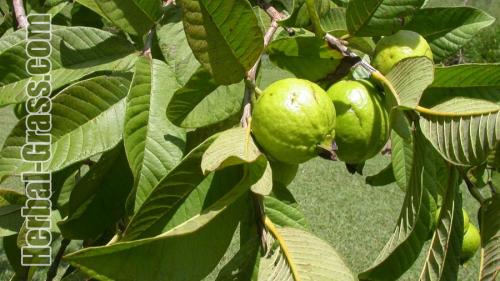
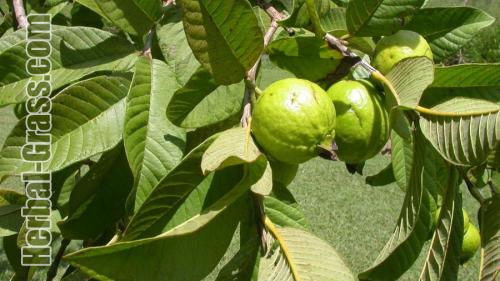
Photos, useful properties of fruits and leaves of the tropical plant Guava (guayava) ordinary.
Botanical description. Guava (guayava) is a shrubby evergreen tree up to 10 meters high, with a smooth reddish-brown bark. This thermophilic tropical plant has opposite elongated leathery leaves and fragrant white five-petal flowers (large, about 4 cm in diameter) with bright white filamentous stamens. The fruits are edible, yellow and round (sometimes pear-shaped), with a diameter of 3 to 10 cm.
Guava fruit is a berry, but is perceived by the consumer as a fruit. The fruit has a thin, yellow, slightly sour, edible layer under the skin, behind it are yellow seeds (more than 3-5 mm long) in juicy pink or yellow pulp.
The fruits ripen 90-150 days after flowering. The size as well as the shape of the fruit is very variable. Outwardly, the guava is similar to a lumpy yellow or green apple. The shape of the fruit is pear-shaped or round, they have a bright yellow, green or reddish thin skin, dark pink flesh. By weight, the fruits of cultivated varieties reach 70-160 grams. Guava fruit is sweet with a strong pleasant aroma. Plants produce up to 120 kg of fruit in the sixth year of fruiting.
Habitat. Peru is considered the birthplace of the guava, the Spaniards discovered the guava in Colombia and Peru, and then spread the plant throughout the tropical zone. Currently, guayava is grown in Central and South America, the Caribbean, in tropical and even subtropical regions of Africa and Asia.
Composition of fruits and leaves
Sesquiterpenes, tannins and leukocyanidin are found in all parts of the plant. In addition, b-sitosterol, quercetin, tannin were found in the roots. Essential oils containing cineole, benzaldehyde, caryophyllene and other compounds were isolated from the leaves.
Psidium guajava leaves contain the flavonoid morin, Morin-3-O-lyxoside, morin-3-O-arabinoside, quercetin, and quercetin-3-O-arabinoside.
Guava fruit contains a lot of vitamins A and B (see table below), especially a high content of vitamin C – it is about 10 times more when compared.
Shoot bark and unripe fruits have the greatest biological activity. The bark contains ellagic acid diglycosides, ellagic acid, leukodelphinidin, saponins. The chemical composition of the bark varies greatly depending on the age of the plant. Immature fruits contain a lot of insoluble calcium oxalate, soluble potassium and sodium oxalate salts, protein, carotenoids, quercetin, giyarivin, halic acid, cyanidin, ellagic acid, free sugar (up to 7,2%), etc.
Unripe fruits are very acidic (pH 4,0), contain an ester of hexahydroxydiphenoic acid with arabinose, which disappears in ripe fruits.
Photo of the fruit guava (guayava) ordinary.
Psidium guinense (Brazilian guayava)
The Brazilian guayava (Psidium guineense) is very similar to the psidium guayava. Outwardly, it differs, first of all, by young shoots: in the classic guava, they are tetrahedral in cross-section, and in the Brazilian one, they are rounded. The size of the plant also differs – the Brazilian guayava is much smaller. Distributed in Brazil, Argentina and southern Mexico.
- Leaves about 18 cm long, opposite (like all myrtle leaves), oval, slightly pubescent, light green.
- Grows more like a bush than a tree. The bark is gray-brown, cracks and flakes in places.
- Flowers are collected in inflorescences like a complex panicle.
- Psidium guinense blooms in our conditions, mainly in spring and sometimes in autumn.
- Fruits that set in the fall must be removed, because in the conditions of an apartment in winter, they will not be able to ripen.
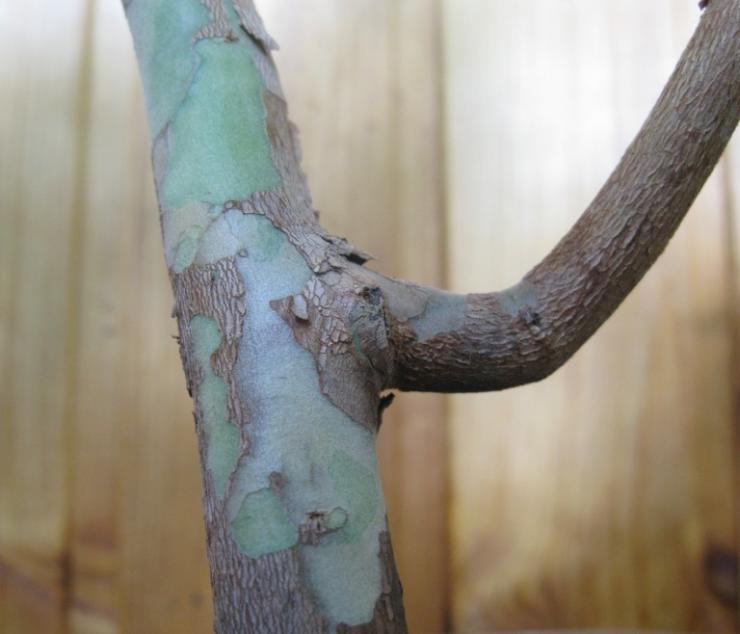
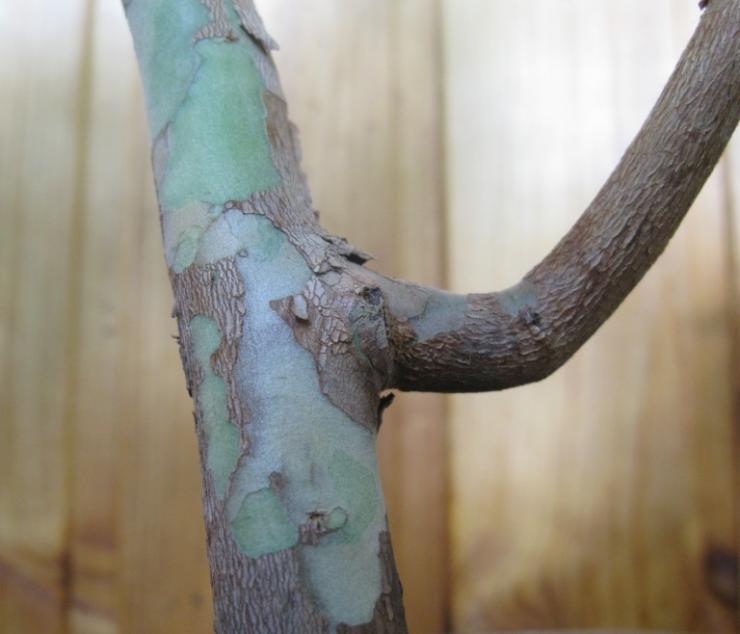
Photo: peeling off the bark on the trunk
Cultivation
Brazilian guayava is easily grown from seed. When propagated by seeds, the first flowering occurs in the 3rd year. It blooms profusely at once, in the first flowering it can give 100 or more flowers. It tolerates pruning well, but at the same time “shows character” and grows all the same “in its own way”, not giving in well to formation.
Ripe fruits have a yellow skin and a juicy light creamy flesh. Fruits ripened in bright light have a pleasant, memorable taste and aroma. Basically, the plant is self-pollinated, but it is better to additionally pollinate with a brush during flowering.
Withstands a short-term drop in temperature to 0 ° C, while the plant hardens, the leaves turn red. Suitable not only for home maintenance, but also from spring to autumn frosts can be kept outdoors.
Prefers sunny exposure. The composition of the soil does not play a significant role, the exceptions are strongly acidic and alkaline soils.
It winters well on an insulated loggia or in a winter garden at a temperature of 7-12˚С. It leaves the wintering state later than other myrtle.
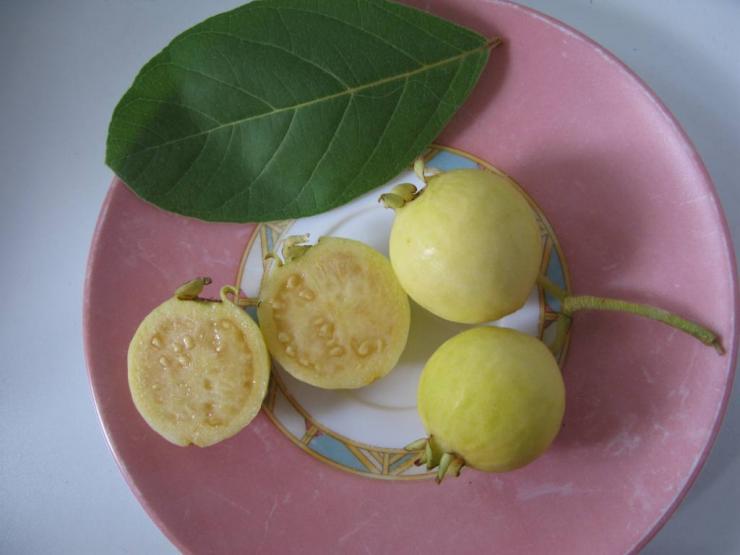
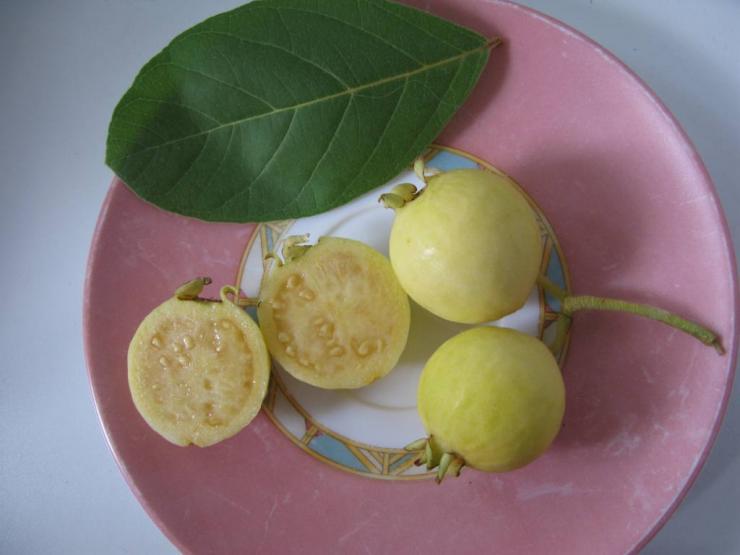
Photo: homemade Brazilian guava fruits
How to grow Guayava or psidium in the house
Unpretentiousness in terms of soil and conditions of detention, resistance to diseases and pests, allow us to consider guayava (psidium) suitable for growing in the house.
Its juicy fruits are about the size of a Chinese apple and are very tasty. The genus Psidium (Psidium) includes evergreen trees and shrubs with opposite solid, smooth or tomentose leaves. Small white flowers are collected in 1-3. Corolla 4-5-lobed, with funnel-shaped tube. This genus of the myrtle family includes about one hundred species native to the tropical and subtropical regions of America. Some are considered valuable fruit crops and are widely cultivated in many countries. These include, for example, P. Guayava and P. Cattley.
Read also: The most unusual flowers in the world TOP 12, Vkusnodarka
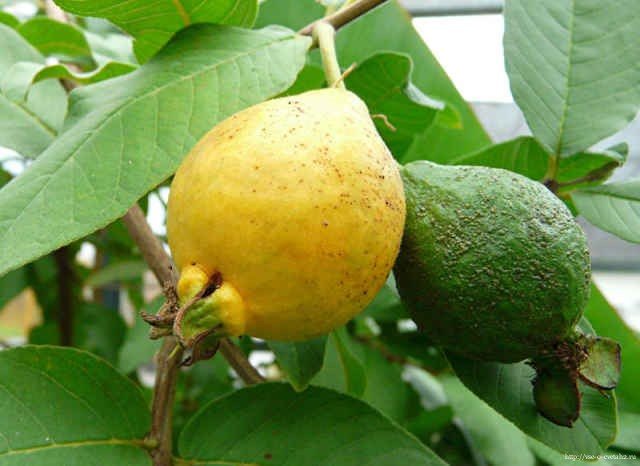
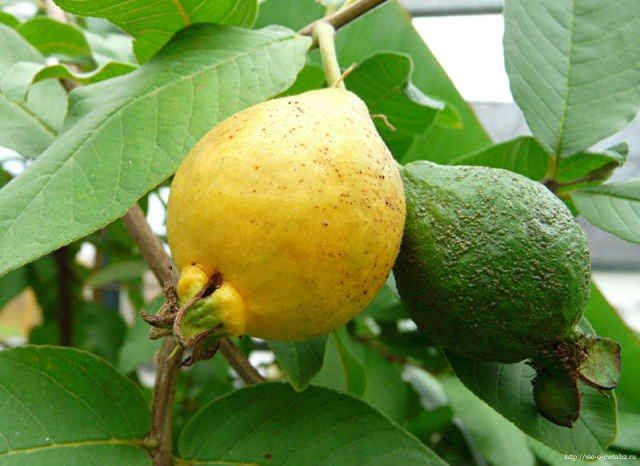
In nature, P. guayava (R. guayava) is found in the tropics and subtropics of Central and South America and is a relatively small tree (4-5, less often 10 meters) with a dense, spreading crown. Leaves are ovate or oblong-ovate, 9-12 centimeters long and 5-6 centimeters wide, on short petioles, with a slight pubescence characteristic of this species. Flowers with a diameter of 2,5-3 centimeters; bisexual, with five petals and numerous stamens surrounding a pistil of the same height. This species is not picky about the soil, but needs a relatively high air temperature (+ 25 + 29 degrees C) throughout the year.
P. Cattley (R. cattleyanum)
A small tree up to seven meters high, native to the humid subtropics of southern Brazil. Leaves are elliptical or obovate, thick, leathery, shiny, dark green, 5-8 centimeters long. Flowers are solitary, axillary. The corolla has four petals. Ripe fruits are purple-red, round or oval, 2,5-4 centimeters in diameter, with thin skin. Yellow-fruited forms are known. The species is resistant to low temperatures and can be cultivated not only in the tropical, but also in the subtropical zone.
Grown in China, India, Mexico, South and Central America, as well as in southern Europe. These two species are most often found in the collections of indoor ornamental gardening enthusiasts. Of these, P. Guayava is more capricious, not only in relation to temperature, he needs good illumination. P. Cattley, unlike the previous species, is more stable. Propagated by p. Cattley vegetatively (cuttings, layering) and seeds. Cutting allows you to get fruiting plants in the second or third year. Cuttings with 2-3 pairs of leaves are cut from last year’s shoots with semi-lignified bark. The upper cut is made directly above the leaves, the lower one – stepping back 2,5-3 centimeters. It should be remembered that the leaves should have a well-formed, intact lamina. As a growth stimulant, you can use a solution of indolylbutyric acid (25 mg per 1/2 liter of water), into which the lower ends (24 centimeters) are lowered for 0,5 hours. At this time, the cuttings are shaded. The rooting substrate is prepared from weathered peat and perlite in equal parts. It should not be waterlogged, otherwise the cuttings quickly rot (a sure sign – the leaves turn black and fall off). The substrate temperature should not fall below +20 degrees C, otherwise rooting may take 2-2,5 months. The stalk is planted strictly vertically. It must be covered with a glass jar or plastic bag to keep the air humidity high. After 1,5-2 weeks, callus is formed, and from this time on, the plantings should be regularly ventilated. Under optimal conditions, the root system of the cuttings is formed in one to one and a half months. You need to root it in the warm season, preferably in May-June.
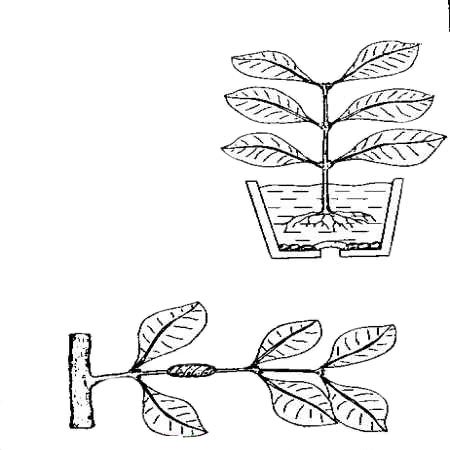

Guayava care
When psidium cuttings are difficult for any reason, you can use the seed method. The fruits contain from 10 to 50 seeds. Their number depends on the species, as well as the size of the mod and growing conditions. The seeds are very hard, small, yellowish-brown, 3-5 mm long, with an uneven surface. The hard shell interferes with their rapid germination, so it is advisable to soften it. The original way was suggested by nature. Many hard-shelled seeds germinate faster after passing through the gastrointestinal tract of animals. In order to somehow imitate this process, it is necessary to keep the guava seeds in fresh cow dung for one day. The result will be positive: seedlings will appear in about 10 days. When sown without treatment, germination is delayed up to 1-3,5 months. To get full-fledged healthy seedlings, it is better to take seeds from the largest, fully ripe fruits. True, at P. Cattley seeds germinate, and even faster, from unripe fruits. This is apparently due to the fact that their shell has not yet had time to harden. The seeds extracted and washed from the jelly-like pulp dry out slightly. Before sowing, they are kept in a pink solution of potassium permanganate for 3-5 hours. Sow in loose nutrient soil to a depth of 1 centimeter. The substrate is prepared from leafy soil, weathered peat and river sand (2: 2: 1).
The optimum temperature for seed germination is + 25 + 28 degrees C. After most of the seedlings appear, the soil around them should be loosened regularly. When the seedlings are 10 centimeters tall, they can be planted in pots, half cut to enhance growth and branching. They bloom in the fourth year, usually in the spring. P. Catgly is propagated by air layers on the shoots of the upper part of the crown. The rooting technique is almost the same as that of citrus fruits. On the selected branch, the bark is removed on a ring 0,5-1 centimeters wide. You can limit yourself to a few transverse cuts with a sharp blade. The ringed place is wrapped with moss or other hygroscopic material (before using the moss, it is disinfected by steaming), then tightly wrapped with an opaque plastic wrap to retain moisture. A small hole is cut in the film from above, through which the moss is moistened with water as needed. Overdrying of the material where the roots develop leads to the death of the entire branch. After about 1,5 months, when numerous roots are formed, the cuttings are cut from the mother plant, the film is removed and, together with the moss, are planted in the substrate. By the timing of the entry into the flowering and fruiting phase, the specimens obtained in this way are similar to rooted cuttings. Psidium is undemanding to soils. For young seedlings, a loose nutrient mixture of leafy earth, humus and sand (2: 1: 1) is made. When the plants get stronger, they can be planted in a heavier substrate: sod, leafy soil, weathered peat, sand (4: 2: 2: 1). As the roots grow, the tree is transferred into a more spacious pot, without destroying the earthen coma. It should be borne in mind that the root system of this culture is relatively small. For a fruiting specimen, a volume of 3-4 liters is suitable. Better to use simple clay pots and wooden tubs.
Read also: 10 most unusual colors in the world, Facts only!
The formation of the crown in psidium is not very difficult. Like all members of the myrtle family, it tolerates pruning well and grows quickly. This feature allows you to give the crown any shape in a relatively short time. The most convenient and beautiful is spreading, rounded on a low trunk. Considering that seedlings grow very quickly, they should be pruned in time. After they are shortened by 1/2 for the first time, shoots appear from the upper axillary buds. They should also be pinched, leaving: 2-3 knots each. Further formation is carried out in the same order. When the plant begins to bear fruit, they continue to constantly monitor the crown, maintaining its compactness, and dry and weak branches are also cut out. The leaves should always be clean, so they should be washed periodically under the shower. The bark at Cattley village is renewed as it grows. It departs in small areas, and a new one appears under it, absolutely smooth. As it ages, it becomes rough. An inexperienced gardener may mistake this feature of a plant for a disease.
The unpretentiousness of psidium lies in the fact that for normal growth it is enough to feed it only with nitrogen fertilizers. They are applied monthly during the entire growing season (March – September). They feed them 1-2 times during the winter. The most effective use of fermented manure (1: 10). Before fertilizing, the soil in the pot is watered abundantly. At home psidium: almost does not suffer from pests and diseases. True, young, delicate leaves of seedlings are damaged by a spider mite. In this case, it is enough to treat them with a celtan solution (2 g per 1 liter of water). The spider mite no longer appears on adult leaves. The psidium flower lasts 2-3 days, or a little longer if the room temperature is low (+ 18 + 22 degrees C) and the air is not too dry. Such conditions are favorable for flowering and mass fruit setting. The flowers are fragrant, when there are many of them, the whole room is filled with aroma. The greatest number of ovaries occurs during spring flowering. Ovaries formed in autumn or winter usually fall off. It takes about 5-6 months from the appearance of the buds to the ripening of the fruits.
Intense sunlight has a positive effect on the growth and ripening of fruits.
Reproduction of psidium
Psidium reproduces well by seed and vegetative methods. Seeds collected by yourself should be thoroughly washed from the pulp and dried in a cool place. Sowing is done in early spring. For planting, use flat boxes with a wet sandy-peat substrate. Seeds are sown in shallow holes and sprinkled with earth. Cover the container with plastic wrap to prevent rapid drying. The box is placed in a bright room with an air temperature of at least + 21 ° C.
Seeds germinate within 1-2 weeks. When a height of 10-15 cm is reached, the seedlings are pinched. A week after this procedure, the plants are transplanted into separate small pots with soil for adult psidiums.
To root the cuttings, lignified shoots 10-15 cm long are cut. They should have at least four intact leaves. The lower cut is immersed in a growth stimulator for a day. After processing, the cuttings are rooted in an upright position in a mixture of peat with perlite and covered with a cap. The air temperature should not fall below + 20 ° C. After 2 weeks, the beginnings of new roots will appear. Now it is necessary to air the seedlings daily. After a month, they can be planted and grown on their own.

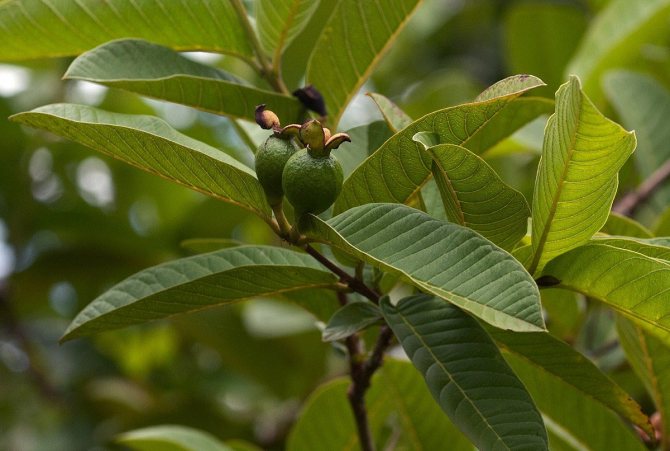
What is the best guava variety to grow at home
Those who want to get fresh fruits at home, it is better to take care of a guava variety that will quickly take root, can bear fruit in this climate, and is not very picky about soil and watering. Botanists consider Psidium Littorale or coastal psidium a suitable “candidate”: it responds generously to warmth and care, does not get sick in indoor conditions, it is not afraid of worms, aphids, fungal diseases and scale insects.
The advantages of the “coastal” guava variety include beautiful flowers: relatively large, snow-white, eight-petaled, of many stamens and extremely fragrant. Psidium has the usual dense green leaves. Its fruit ripens up to four centimeters, spherical in shape, the skin color is light yellow, fragrant, it will have the same qualities as growing in nature.
Home guava care
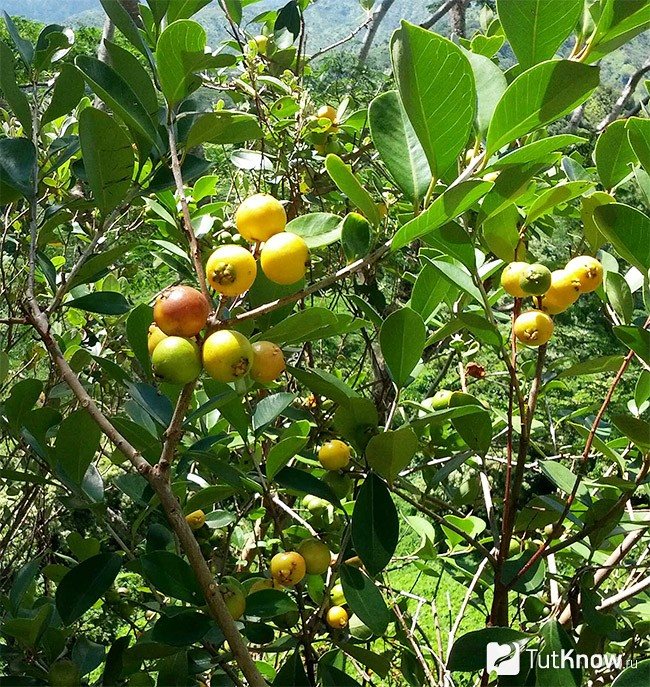
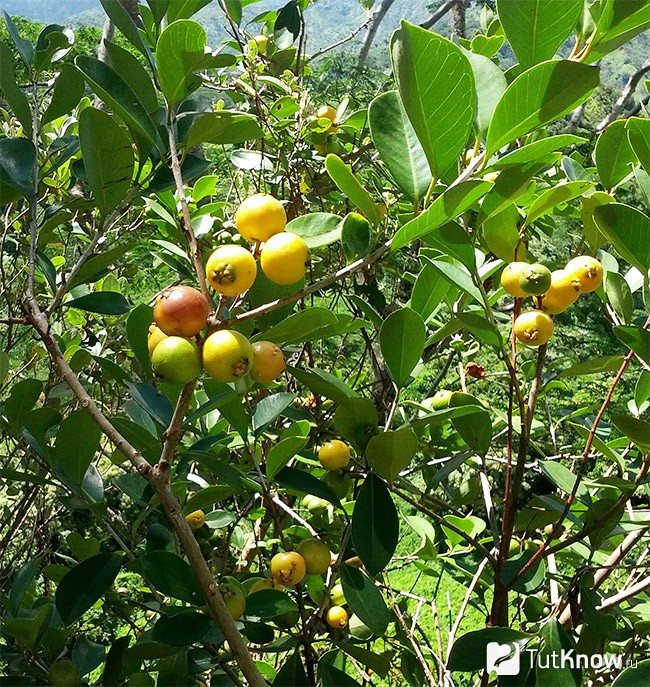
Potting soil preparation: in order to form a runoff to remove excess moisture during irrigation, expanded clay is poured onto the bottom, then cow manure (a little) is laid, and a mixture of garden soil, sand, peat (2: 1: 1) or from earth, sand, humus (1: 1 :one).
Temperature conditions: in order for guava seeds to sprout, heat is required from 22 to 28 degrees. In general, guava is a thermophilic plant and also loves light. Therefore, as soon as the still warm spring rays appear, the guava can be gradually transferred to the balcony. To provide enough moisture, guava can not only be watered into the soil, but also “rinsed in the shower” in the heat along with leaves and branches.
Young plants are sensitive to cold. In general, the minimum temperature that allows guava to develop is only +15 degrees. Frost damage (-2 ° C) damages foliage, at -3 ° C psidium irrevocably leaves its owners.
Watering and feeding: when shoots have appeared, the earthen coma should not be allowed to dry out. Because of this, young shoots dry out and leaves curl. The root system of the guava is superficial. Psidium is watered abundantly in summer and as needed in the winter months. Guava is fed at home from autumn to the first sunny days with infused mullein.
Transplant: when the psidium sprout has grown to 5 cm, it can be transplanted. Tall trees up to 75 cm in height are also suitable for transplantation. It is recommended to transplant the plant several times: first in a small container, then in larger ones, etc. This can be done in spring (March-April), but not during flowering and fruit emergence.
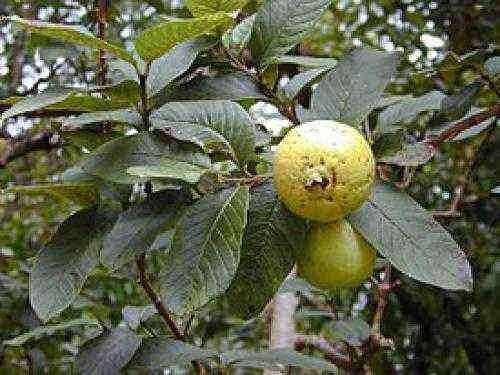
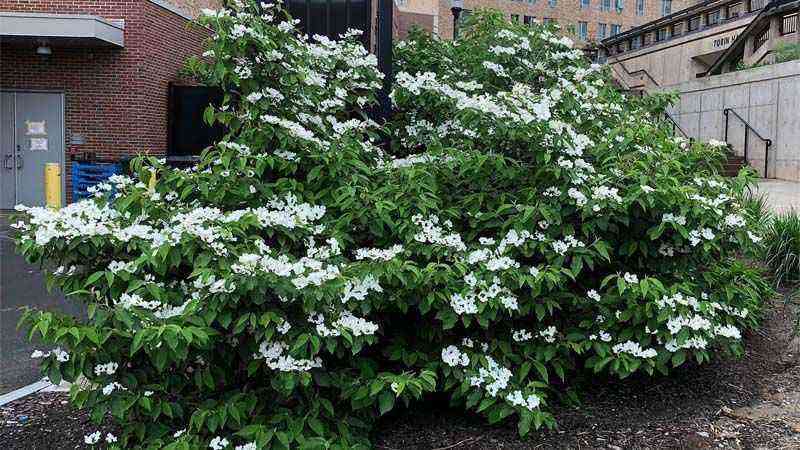

![Cultivo de Magnolia stellata [magnolia estrellada] Cultivo de Magnolia stellata [magnolia estrellada]](https://farmer-online.com/wp-content/uploads/2021/05/Cultivo-de-Magnolia-stellata-magnolia-estrellada.jpg)

